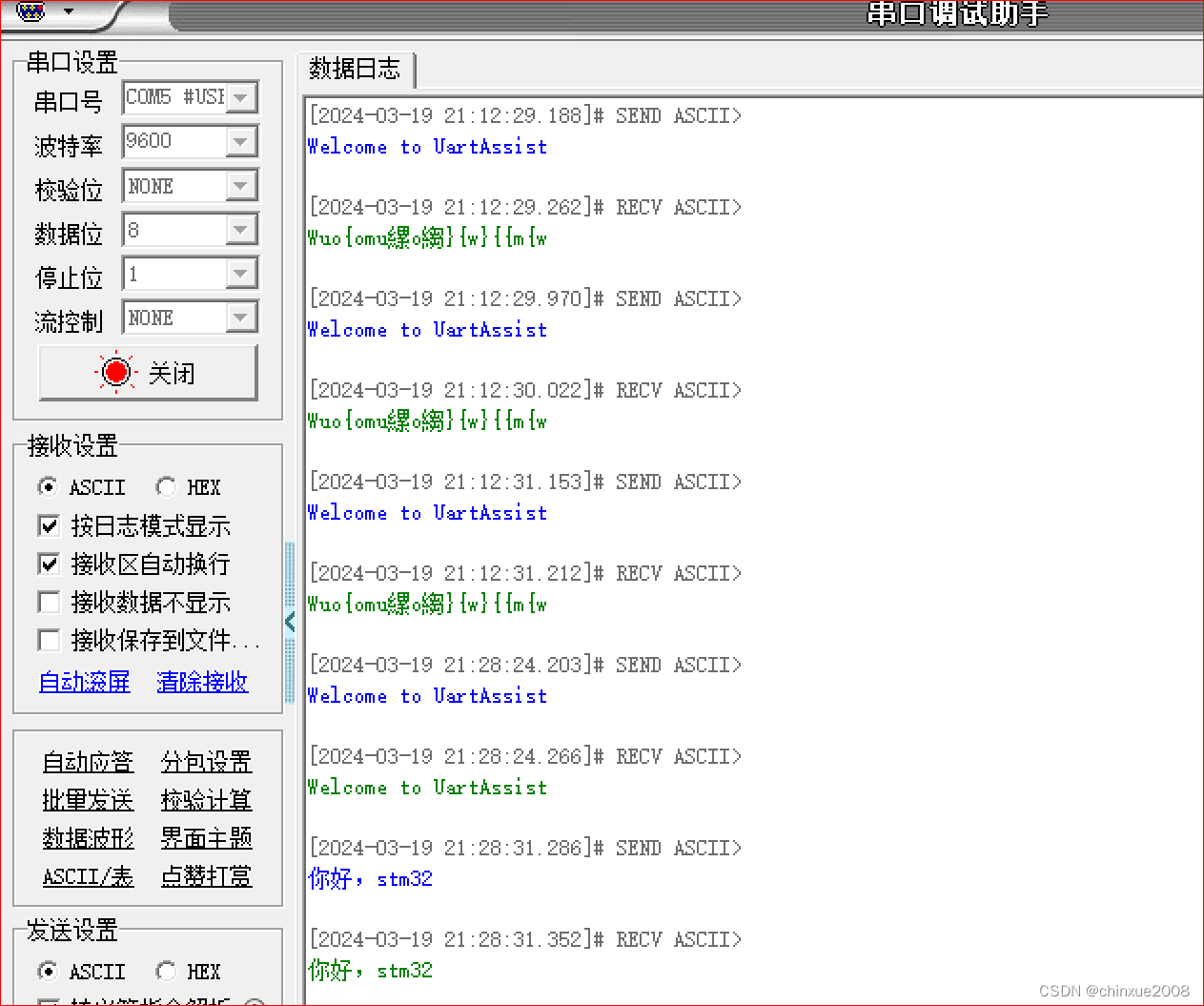基于之前的GPIO等工程,后面的上手难度就简单多了,主要是相关寄存器的设置。
void USART1_Config(void)
{GPIO_InitTypeDef GPIO_InitStructure;USART_InitTypeDef USART_InitStructure;/* config USART1 clock */RCC_APB2PeriphClockCmd(RCC_APB2Periph_USART1 | RCC_APB2Periph_GPIOA, ENABLE);/* USART1 GPIO config *//* Configure USART1 Tx (PA.09) as alternate function push-pull */GPIO_InitStructure.GPIO_Pin = GPIO_Pin_9;GPIO_InitStructure.GPIO_Mode = GPIO_Mode_AF_PP;GPIO_InitStructure.GPIO_Speed = GPIO_Speed_50MHz;GPIO_Init(GPIOA, &GPIO_InitStructure); /* Configure USART1 Rx (PA.10) as input floating */GPIO_InitStructure.GPIO_Pin = GPIO_Pin_10;GPIO_InitStructure.GPIO_Mode = GPIO_Mode_IN_FLOATING;GPIO_Init(GPIOA, &GPIO_InitStructure);/* USART1 mode config */USART_InitStructure.USART_BaudRate = 9600;USART_InitStructure.USART_WordLength = USART_WordLength_8b;USART_InitStructure.USART_StopBits = USART_StopBits_1;USART_InitStructure.USART_Parity = USART_Parity_No ;USART_InitStructure.USART_HardwareFlowControl = USART_HardwareFlowControl_None;USART_InitStructure.USART_Mode = USART_Mode_Rx | USART_Mode_Tx;USART_Init(USART1, &USART_InitStructure); USART_Cmd(USART1, ENABLE);
}UART的初始化寄存器明显多了很多。
int main(void)
{ /* USART1 config 115200 8-N-1 */USART1_Config();printf("\r\n welcome to stm32 \r\n");printf("\r\n hello stm32:) \r\n");USART1_printf(USART1, "\r\n Welcome to STM32 \r\n");USART1_printf(USART1, "\r\n ("__DATE__ " - " __TIME__ ") \r\n");for(;;){printf("\r\n 欢迎使用STM32_测试fprintf:) \r\n");Delay(0x2fffff);}
}按照原有理解,fprintf跟专门写的UART_printf不一样,UART才是串口输出的端口,但是fprintf竟然可以直接输出到串口,但是没有系统重定向的机制,转入define没有对应的参数。
int fputc(int ch, FILE *f)
{/* 将Printf内容发往串口 */USART_SendData(USART1, (unsigned char) ch);
// while (!(USART1->SR & USART_FLAG_TXE));while( USART_GetFlagStatus(USART1,USART_FLAG_TC)!= SET); return (ch);
}查了下才发现,用了重定向功能,fputc就是将printf函数重定向。
使用了网上介绍的防中文打印乱码的四种方法,没有成功,打印中文仍然乱码。
尴尬,竟然因为是新起的工程,原来改成9600的波特率,在新工程没有改,仍然是115200,改正后正常。


)




)






 功能支持 Oracle)


)


